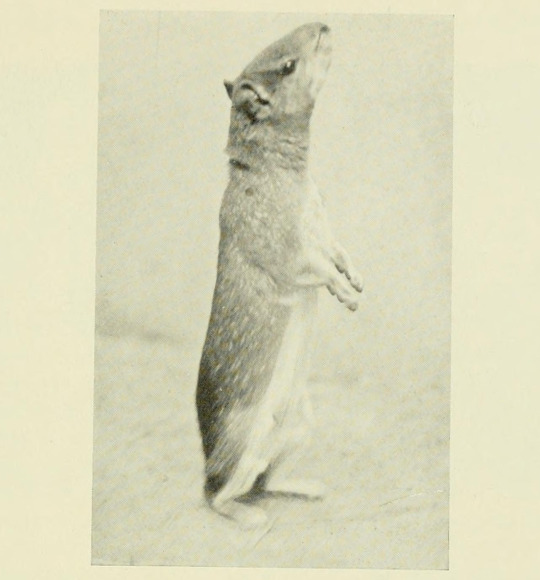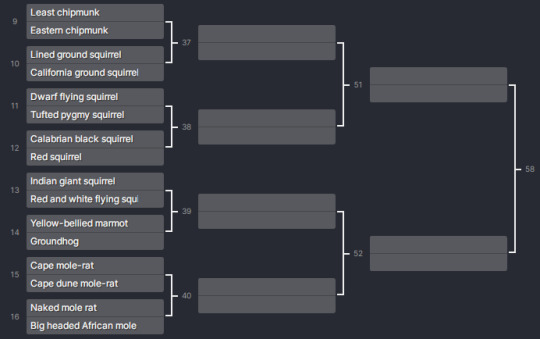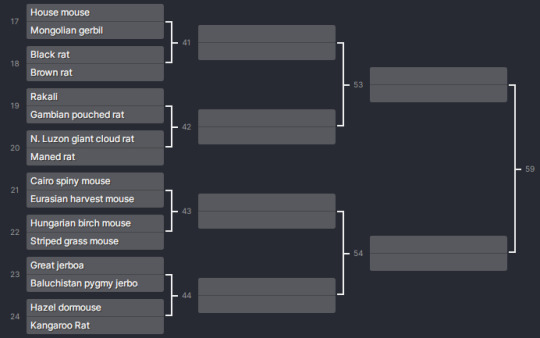#spix's yellow-toothed cavy
Text
Round 1.6

Information about contestants below!
Spix's yellow-toothed cavy (Galea spixii)
Their fur is gray tinged, with brown back, light sides, and whitish abdomen. Incisors are yellow. Herbivorous, foraging on grasses and other low vegetation.
They are found in open savanna and semiarid habitats. Spix’s Yellow-toothed Cavies form well-marked runways that they use regularly. They also clear small areas for sand bathing. They do not construct burrows, likely due to extremely rocky soil but they construct temporary nest sites under rocks or low vegetation. They are terrestrial animals with diurnal habits, but sporadically active at night.
Litter size ranges from one to five, with an average of three. They have hair and open eyes at birth. Males and females in this species are aggressive to each other. Three subspecies are recognized.
Capybara or greater capybara (Hydrochoerus hydrochaeris)
Capybara is the largest living rodent and grows to 106–134 cm in length. It inhabits savannas and dense forests, and lives near bodies of water. It is a highly social species and can be found in groups as large as 100 individuals, but usually live in groups of 10–20 individuals.
Capybaras have a heavy, barrel-shaped body and short head, with reddish-brown fur on the upper part of their body that turns yellowish-brown underneath. They have slightly webbed feet and vestigial tails.
Though quite agile on land, capybaras are equally at home in the water. They are excellent swimmers and can remain completely submerged for up to five minutes. They can sleep in water, keeping only their noses out. Capybaras are herbivores and are very selective feeders.
31 notes
·
View notes
Text

Spix's yellow-toothed cavy
By: W. S. Berridge
From: The Book of the Animal Kingdom
1910
#captivity#cavy#hystricomorph#rodent#mammal#1910#1910s#W. S. Berridge#The Book of the Animal Kingdom (1910)
46 notes
·
View notes
Text
Rodent Competition 2023
Round 1




full list below!
Long-tailed chinchilla / Southern viscacha
Common degu / Horned gopher
Common gundi / Guinea pig
Josephoartigasia monesi / Pacarana
Patagonian mara / South African springhare
Spix's yellow-toothed cavy / Capybara
Central american agouti / Lowland paca
Laotian rock rat / Dassie rat
Least chipmunk / Eastern chipmunk
Thirteen-lined ground squirrel / California ground squirrel
Japanese dwarf flying squirrel / Tufted pygmy squirrel
Calabrian black squirrel / Red squirrel
Indian giant squirrel / Red and white giant flying squirrel
Yellow-bellied marmot / Groundhog
Cape mole-rat / Cape dune mole-rat
Naked mole rat / Big headed African mole rat
House mouse / Mongolian gerbil
Black rat / Brown rat
Rakali / Gambian pouched rat
Northern Luzon giant cloud rat / Maned rat
Cairo spiny mouse / Eurasian harvest mouse
Hungarian birch mouse / Striped grass mouse
Great jerboa / Baluchistan pygmy jerboa
Hazel dormouse / Kangaroo rat
Grasshopper mouse / Winter white dwarf hamster
Hatt's vesper rat / Syrian hamster
Norway lemming / Florida Mouse
European water vole / Townsend’s vole
Northern mole vole / Muskrat
Bristle-spined rat / Mountain beaver
North American beaver / Palaeocastor
Crested porcupine / North American porcupine
#rodentcompetition2023#some changes might happen#mostly if I made some mistakes#but hopefully not!#here they are :D#some names in photos are shortened to fit#tournament poll#round 1
18 notes
·
View notes